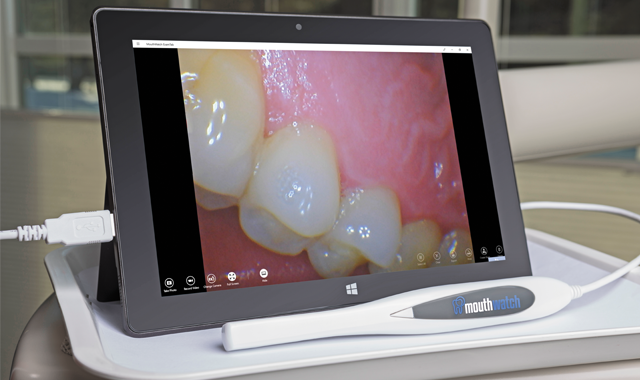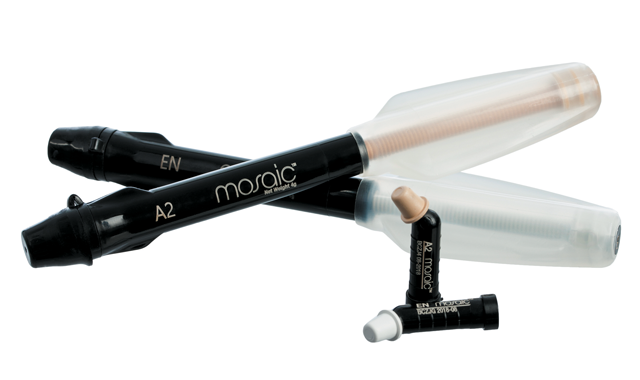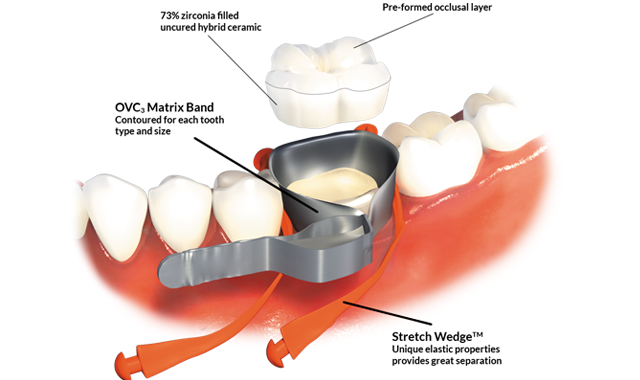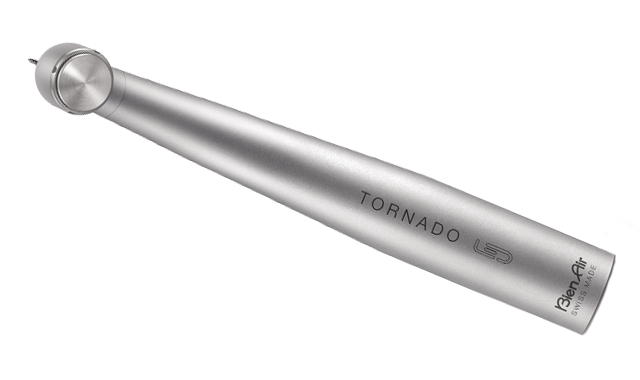Top 5 Product Test Drives of 2017
Dr. Flucke, Chief Dental Editor and Technology Editor at DPR, breaks down the products that blew him away this year.
Wow, time sure flies when you are having fun! And what could be more fun at this time of year than to discuss technology? I personally cannot think of anything better. Especially for this issue, as it’s time once again for the Technology Evangelist’s Top 5 Test Drives.

Every year I get to evaluate lots of gear. Sometimes I see game-changers and sometimes I see things that I’m not so impressed by. However, all the products I look at receive a fair and equitable review. Clinical products receive a fair amount of bench testing before ever being used in the mouth, while non-clinical products get put through their paces as suggested by the manufacturer and then I start pushing them to see how far I can go before something goes wrong.
And remember: These aren’t the only great products I’ve seen this year, but they are the five best. OK, now let’s get started.

Garrison FitStrips
When it comes to interproximal finishing of composite restorations, we are often given several less-than-optimal choices. We can use long metal strips, but these need to be used judiciously to avoid cutting the lip. There are the tiny strips with C-shaped handles, but sometimes those are too short and difficult to tease into the interproximal area.
To help solve this situation, Garrison Dental Solutions created the FitStrip. The device has a strip about the size of the C-shaped devices, but with a long handle, making them look sort of like a mini toothbrush with a finishing strip in place of the bristles. The great thing about these is the handle provides very nice leverage when placing or using the strip. Additionally, the handle is detachable for the times you don’t need it.
The handle also twists and, as it does, the curvature of the band changes, making adaptation of the band a very easy process. From broad to narrow contacts, the FitStrip can adapt to make finishing them a simplified process.
The bands are very durable and hold up well even after multiple uses. Whether you are finishing composites, doing interproximal reduction for ortho, or removing leftover cement, I’ve found FitStrips work well.

MouthWatch and TeleDent™
Anyone who is involved with technology and clinical dentistry knows just how important communication is to helping your patients understand their needs and the solutions you can provide. That communication comes in the form of visual devices, and one of the most important of these is the intraoral camera.
Over the years, dentistry has seen some impressive improvements in intraoral cameras. They have gone from cart-based, large-footprint boxes to the form factor or a Sonicare toothbrush with a USB cord.
My first camera was cart-based and cost $15,000, so I was thrilled when I watched prices drop to around $3,500. A price drop of 77 percent is nothing to sneeze about. Yet, even though prices dropped that far, they failed to fall much further and maintain quality. Until, that is, MouthWatch came to market. The company is currently selling intraoral cameras that provide great images for $299. Yes, you read that correctly.
When I first plugged my MouthWatch camera into the computer, I was not expecting much. However, the moment I started seeing the images it produced, I was blown away.
The company also has an app for your computer called TeleDent. It allows you to do either live video conferencing using their camera and a regular webcam or just the MouthWatch camera. You can do live video conferences in a HIPAA-compliant system, or you can save the images and upload them to share on a HIPAA-compliant web server. Any time the person you share it with accesses the photos and/or makes changes you are notified.
The system works well, is turnkey and is affordable. Smart!

Ultradent Mosaic® composite
I love it when companies “get it right,” and Mosaic is one of those products. Ultradent worked on development of their next generation composite for several years, but they refused to bring it to market until they were absolutely convinced that they had exceeded everyone’s expectations. Suffice to say, “Mission accomplished!” Ultradent has succeeded in creating a composite that quickly became one of my favorites.
The thing that immediately struck me was how easy it is to manipulate. The biggest complaint I have about composites in general is that they tend to stick to the instruments we use. Mosaic was specifically designed to overcome that problem and the result is phenomenal. You can move the material around like thick cake icing without stickiness and it stays where you put it, allowing for total control during clinical manipulation.
Mosaic is a great material, no matter which tooth you are repairing. A composite is dependent on its filler particles for both its strength and its esthetics. This material is designed with a very nice balance of fillers so that it fulfills the properties for use anywhere in the mouth. It has exceptional aesthetics for anterior restorations and high compressive strength (486.4mpa) for durable posterior restorations.
Mosaic comes in 20 shades and, much to the delight of many users, Ultradent has gone back to the traditional shading nomenclature. There are a variety of dentin shades that are slightly translucent and work well in the posterior, while the enamel shades have variable opacity that allows for a single shade in small areas. Of course, for large Class IV fractures, layering can be done utilizing a combination of dentin and enamel shades.
The shade guide is made of the actual composite you’ll be using for a more accurate shade assessment, and a flexible shade tab holder allows for bending around the patient’s face to compare multiple shades at once.
If you are looking for a new workhorse composite, be sure to check out Mosaic.

Rhondium OVC3
The OVC3 (One Visit Crown) from Rhondium is one of the more interesting ideas I’ve seen in the last few years. As bonding and esthetics in porcelain have evolved over the last 20 years, we’ve seen our preparations for fixed prosthetics change as well as the strength we expect to achieve with bonded restorations.
The creation of highly esthetic porcelain such as lithium disilicate has allowed for preparations that terminate at the height of the gingiva or even supragingivally. This means margins are much easier to detect and restorations are much easier to bond, since contamination from blood and sulcular fluids is much less of a problem. This entire progression has allowed for preparations to be much more conservative while making the bonding process stronger and much more predictable.
Rhondium steps into this space with a unique idea of providing lab-made, prefabricated porcelain crowns that can be bonded onto conservative preparations in a unique one visit crown procedure with no need for CAD/CAM.
The system comes prepackaged with everything needed to perform the restoration. It includes a size gauge, specially contoured matrix band, one-of-a-kind “stretch wedges” that provide greater interproximal separation than standard section matrix “rings,” and the OVC3 itself.
The restorations come in a variety of sizes for any posterior tooth and the size is determined by a “size selector key” that shows the practitioner the proper width to use. The OVC3is available in either lithium disilicate or a hybrid ceramic material. The process eliminates lab fees, temporaries and second appointments, but without the cost of CAD/CAM.

Bien-Air TORNADO Line
Bien-Air has developed a reputation in the industry of high-quality, precise, Swiss-made products. With a reputation like that, it’s easy to see why many doctors are excited about this new line of air-driven handpieces.
The TORNADO comes in two types. The standard TORNADO has Bien-Air’s SteadyTorque™ technology and delivers 30 watts of power. That means procedures can be accomplished more quickly, while fine adjustments can be made without the handpiece stalling. In addition to the power, the unit also features the Accu-Spray Quattro Mix™ outlet spray system as well as the Accu-Chuck PreciPlus™ vibration-canceling bur retention system. These two features help reduce the turbine’s noise to a quiet 55 dBA.
For those requiring greater visibility, there is the TORNADOS model. This handpiece has a compact head for those clinical situations that need better visualization of the field or for patients who have a limited opening.
While the turbine/head is smaller, this model still delivers a hefty 24 watts of power.
Wrapping up
So, there they are. The Top 5 Test Drives for 2017. I continue to be impressed with the strides our profession is making in improving the things we need to improve the lives of our patients. Needless to say, I’m bullish on what I will get to test in 2018!